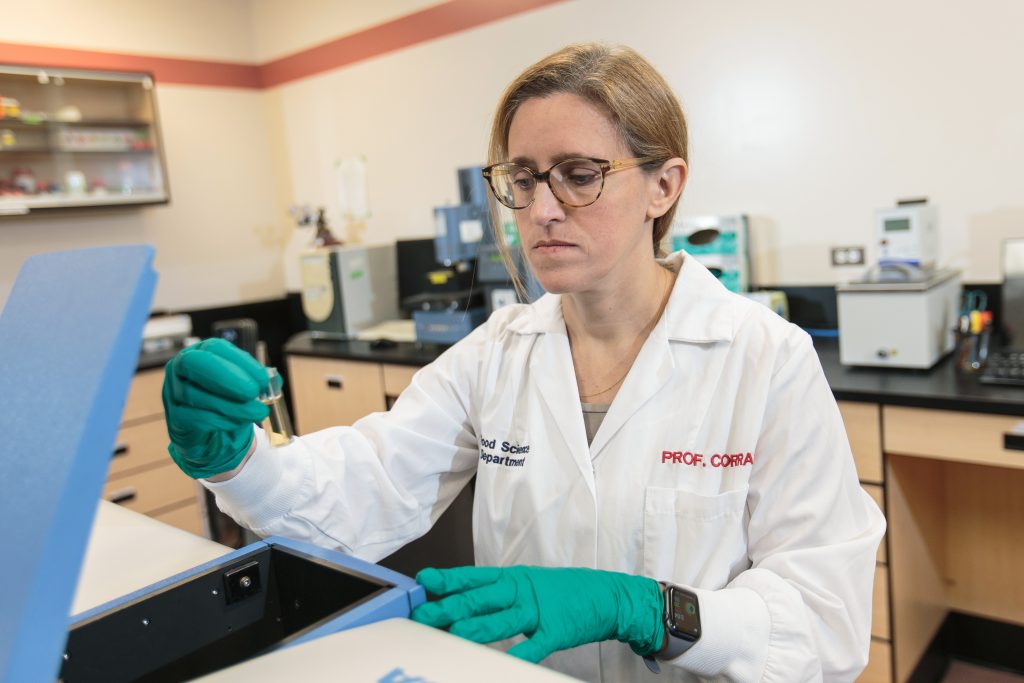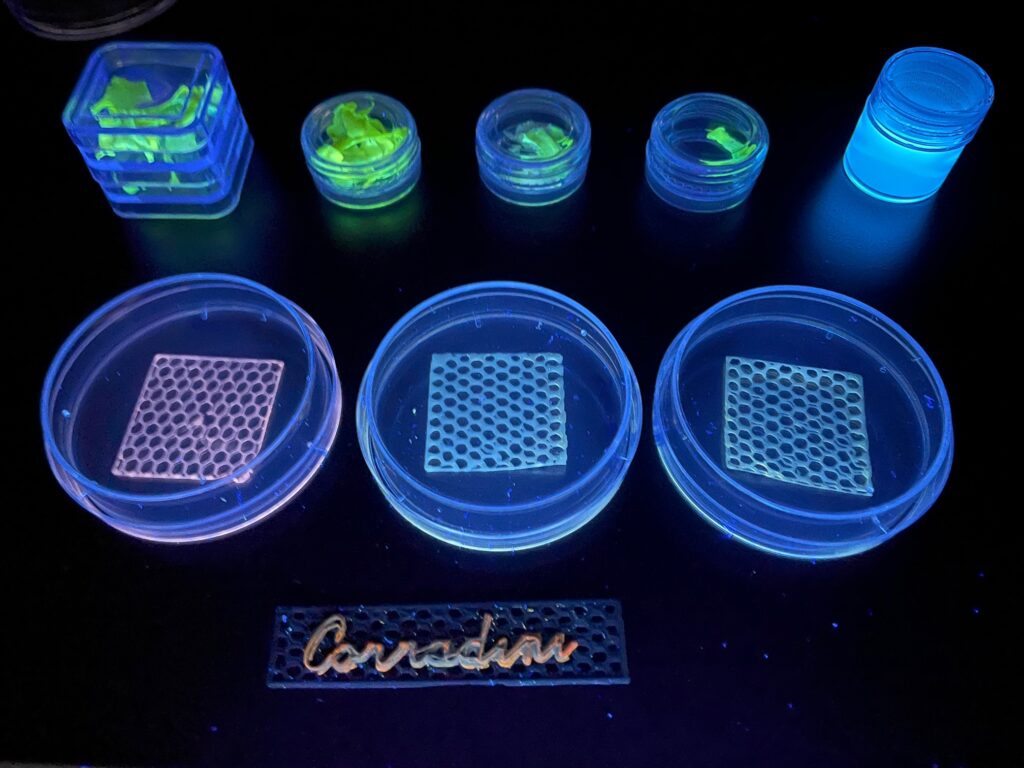It sounds like something out of science fiction, but Maria G. Corradini, Arrell Chair in Food Quality, is helping to lead a new revolution in the future of food – 3D printing.
In 3D printing, a user creates digital models to guide a printer that combines and deposits various ingredients in a specific order. The printer commonly extrudes the food layer by layer, and it can then be directly consumed or followed by a final treatment (e.g., baking). Many kinds of food have been 3D printed – early 3D printed items were chocolate or cereal-based products, while vegetables and meat have also been successfully used in 3D printing. It also allows us to include novel foods with a variety of benefits for both health and product stability.

Dr. Maria Corradini in a lab inspecting a sample.
In a recent article in npj Science of Food, Dr. Corradini and co-authors reviewed the world of 3D food printing. They found that it offers several benefits, allowing us to create food that is:
Personalized
3D printing food allows us to create products that are customized to the consumer. This may include food that is personalized to specific nutritional needs – for example, high protein, low sugar, or high in specific nutrients or minerals. 3D printing also allows for the inclusion of novel ingredients that can make the nutrients and compounds in food more bioavailable. Additionally, 3D printing allows us to customize food for those with sensory needs, including providing nutritious foods to seniors who may need softer foods due to issues with swallowing.

3D printed wafers produced with corn protein at different concentrations.
Sustainable
Food can be produced on demand through 3D printing – creating only the specific products that consumers want, using exactly as many ingredients as are needed, and leading to less food waste and thus a more sustainable food system. Moreover, 3D printing allows for the inclusion of uncommon ingredients – insect flours, vegetable stems, microalgae, and side products like proteins from salmon skin, for example, which are nutritionally dense but not frequently consumed. Additionally, it also allows laying out ingredients in ways that deter spoilage. The flexibility of ingredient sourcing for 3D printing, the ability to use structure to increase a product’s stability, and the use of products that are side-streamed from other food processing are other key contributors to its role in a sustainable food system.

Students pose with 3D-printed wafers produced from corn protein.
Innovative
For chefs and food production companies, 3D printing offers innovation and novelty that can appeal to consumers. Food in unusual shapes – geckos, or flowers, for example – could tempt children to eat; chefs have the ability to create dishes with unusual and attractive visual or textural properties, or even foods that change colour; or consumers can help to co-create food products based on their own tastes. Beyond market appeal, innovations in 3D printing also allow researchers to test various properties of food. Dr. Corradini’s team, for example, recently used 3D printing technology to find the ideal shape that requires lower baking temperatures for cookies to reduce the formation of acrylamide, or potentially cancer-causing compound.
What is the future of 3D food printing?
Dr. Corradini and co-authors point to a few issues that need to be addressed before 3D printing is available for the mass market. Low printing speed, difficulties with printing multiple food types at a time, and a lack of research about the safety and shelf life of 3D printed food all must be addressed. Furthermore, we need to change the terms we use to talk about 3D food printing and change the media narrative, which often represents 3D food as unrealistic, unhealthy or unappealing to consumers.

Regardless, many people in the industry are recognizing that the future of food includes 3D printing.
It may include pairing 3D printed food with data-driven technologies, like wearable activity trackers, to ensure people get the calories and nutrients they need. With its on-demand, customizable nature it also holds promise for military uses and long space missions.
Digital gastronomy may be another path. Chefs can use digital tools to precisely manipulate ingredients and create the best possible recipe, or work with consumers to co-design a product. This emerging technology offers promise in producing food that is personalized, sustainable, reduces food waste, and allows us to create innovative, nutritious food products.
Related Reads:
New Scholars Awarded Arrell Scholarships
Innovative Agri-Food Course Fosters Interdisciplinary Collaboration and Real-World Problem Solving
NZFSC Workshops Foster Student Learning and Professional Development